Winners of the National Museum of Afghanistan Competition
By Bustler Editors|
Thursday, Oct 4, 2012
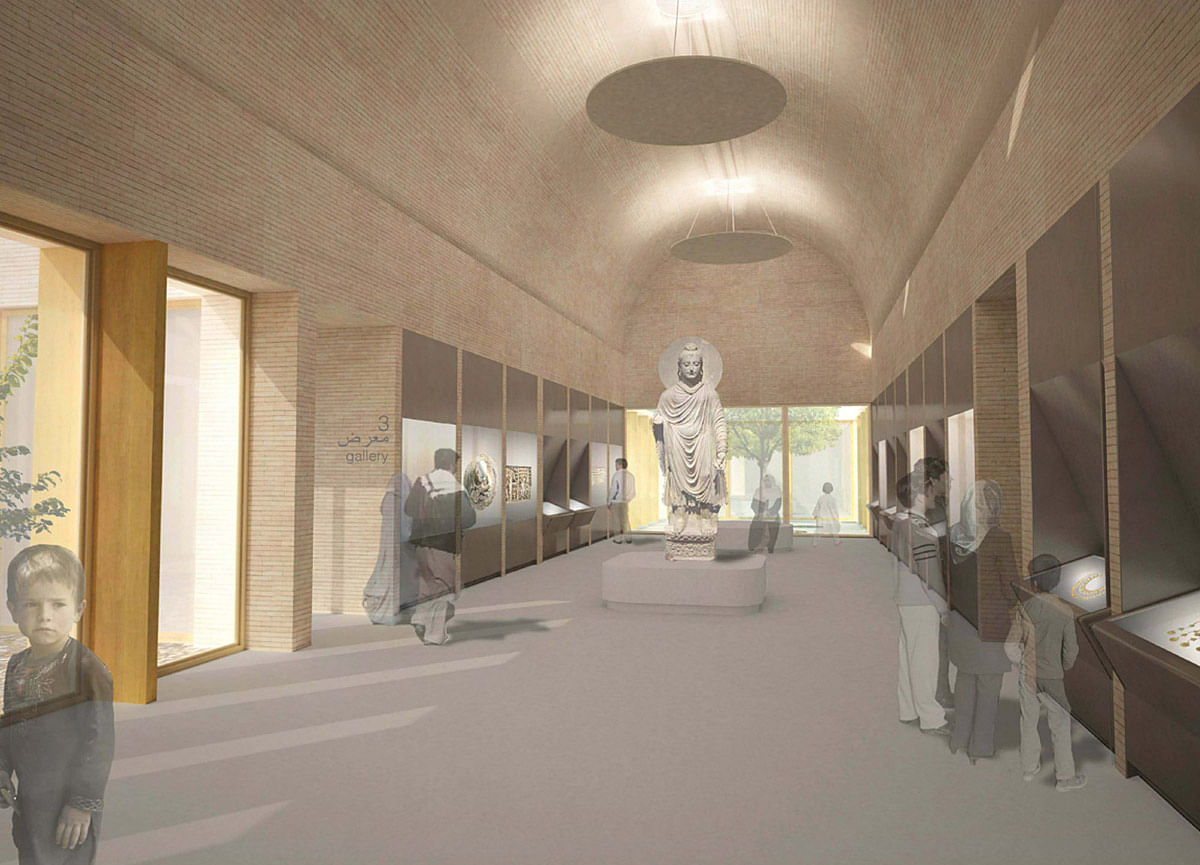
Related
In the international architectural ideas competition for the new design for the National Museum of Afghanistan, the entry by Spanish team AV 62 Arquitectos was selected for the First Prize. The Afghan Ministry of Information and Culture and the US Embassy recently announced the results at an awards ceremony in Kabul. The competition had received a total of 72 design proposals from 31 countries.
From the competition brief: "While it is expected that in the future a new museum will be designed and built according to international standards, this one stage ideas competition shall help to visualize what a modern museum in the 21st century in context of today’s Afghanistan will look like.The design brief assumes that most competition participants cannot travel to Kabul in order to visit the site, hence an unusual comprehensive brief was put together including descriptions, images, drawings and diagrams for the site. This detailed brief asked to generate a design proposal for an architectural master plan and detailed building design for the existing site of the National Museum of Afghanistan. Focus of submissions shall be on, but is not limited to, a visionary but cultural sensitive design, sustainability and use of renewable energies, adequate combination of low and high tech solution, sensitivity of social and religious influences, and urban planning with the final purpose of balancing the required functions and interests of the National Museum of Afghanistan in an architectural master plan and detailed building design. Designers are expected to respond creatively with their design proposals to the established brief addressing a set criteria for general architectural qualities, detailed security requirements (physical and non-physical measurements), and specific functional, technical and economic design conditions against which the evaluation criteria are scored."

First Prize: AV 62 Arquitectos, Spain
Design team: Toño Foraster Mariscal, Victoria Garriga Ariño, Blanca Pujals, Stefano Carnelli, Itziar Imaz, Nuno Lopes, Daria Luce, Luis de la Fuente, Samantha Sgueglia, Marc Marin
From the jury report: "The strength of this Design Proposal rests on the balance that has been achieved between the architectural form and the presentation of the collections that will be housed in the proposed new Museum building. This has been achieved by an exterior appearance that is distinctive yet understated and which responds to the local context, along with a coherent scheme of interior spatial articulation that takes into account the nature of the materials that might be displayed. Moreover, the design is a relatively simple building solution that is both affordable and realistic to construct with the materials and skills locally available – this design will enable the collection to be safely stored as soon as possible. The clear and simple circulation concept, along with a degree of modularity, results in an efficient spatial arrangement for staff and operations that also provides a degree of flexibility in responding to changing needs and variation of displays.
In their presentation, the designers seem to have given as much thought to the exhibitions as to the appearance of building envelope, which is discreet and does not compete with the existing National Museum premises or other buildings in the area. The proposal is one of the few that creates interior spaces that respond effectively to the brief, while providing a basic, well-proportioned shell within which a number of display configurations might be considered, with effective and realistic use of the intense natural light of Kabul through the intelligent use of the internal courtyard and ceiling baffles. This consideration of variation and drama – the two most important assets of a gallery space – would be a delightful surprise to the visitor moving through this deceptively simple shell. Through its use of parallel brick vaults to roof the building, the designers have sought to draw on vernacular forms and materials, as well as on uses of natural light. The Jury felt that, although the design’s application of exterior decorative ceramic tile was not particularly successful, the use of such traditional materials could be revisited and effectively utilized with this design. The use of traditional materials is generally cost effective in terms of construction costs and maintenance and also supports the preservation of these traditional skills and the craftsmen who practice them. The human scale of the proposed new museum building is not intimidating, and has the potential to welcome visitors and encourage them to spend time inside or in the adjoining garden, where appropriate additions have been proposed that have the potential to link the existing with the new. In summary, the First Prize Winner is a bold and thoughtful response to the technical and aesthetic requirements of the brief, and it has the potential to result in a building that is both efficient and affordable and, as a national institution, to be a source of pride for future generations of Afghans."

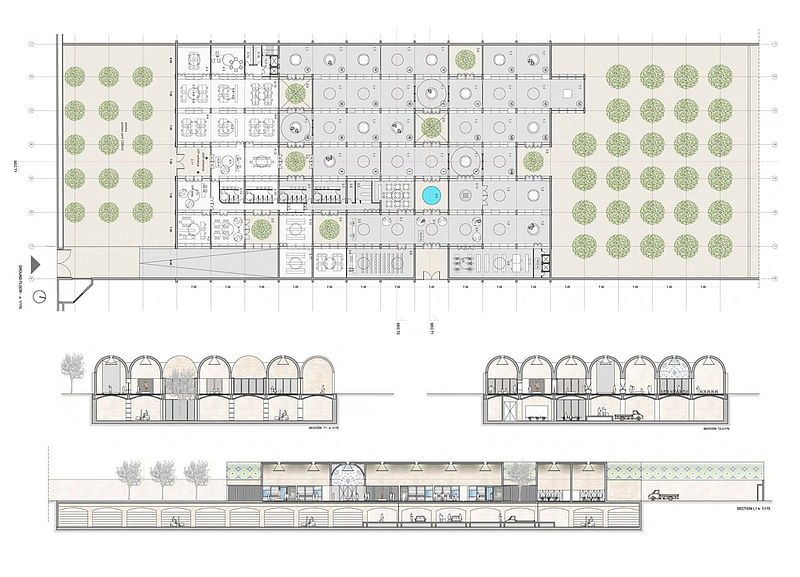
Second Prize: Mansilla + Tuñón Arquitectos, Spain
Design team: Emilio Tuñón, Matilde Peralta, Jesús Vasallo, María José Castillón, Ruben Arend, Carlos Brage, Marceline Ruckstuhl, Andrés Regueiro, Carlos Martínez
From the jury report: "This Design Proposal is a more demonstrative, monumental type architecture that expresses the functional spaces within. The scale of the proposed new museum building is bigger than that of the First Prize Winner and the exterior profile can be seen as visually responsive to the backdrop of the surrounding mountains. Like the First Prize Winner, the design is based upon a grid, offering easy expansion and interior flexibility, but here the grid is expressed more directly externally and the building becomes visually more assertive. The design has an identifiable and recognizable visual form and scale that is quite sculptural, without being too monumental.
The Design Proposal offers an appropriate use of local materials with good variation in internal spatial volumes and sizes. The simplicity of the plan encourages effective movement of visitors through exhibition spaces of different and interesting qualities, although the larger interior volumes may appear overly massive. In some cases these spaces may be disruptive and may possibly overwhelm the both visitors and the collections on display. The suggested interior finishes would not compete with the richness of the collection objects, though the interesting and explicit design references to historic Afghan architecture are not fully developed. Although the design does respond well to the need in providing a secure external and internal environment, fulfill functional requirements and complies with the master plan, the proposed design's relationships with the existing Museum building, the adjacent historical buildings and the site garden could have been further elaborated. Because of its larger size, the Second Prize winner would be expected to have significantly higher construction costs."

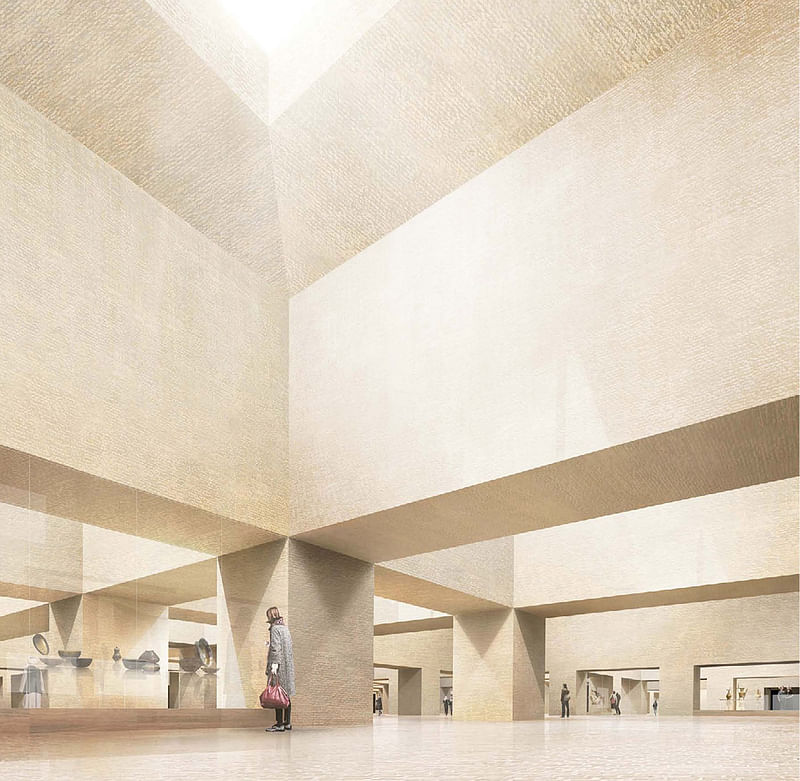
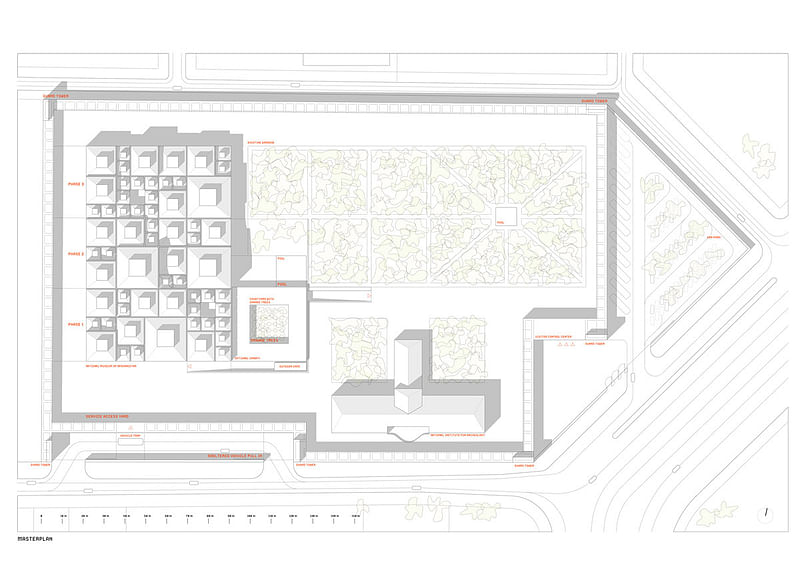

Third Prize: fs-architekten, Paul Schröder Architekt BDA, Germany
Design team: Paul Schröder, Sabine Habicht, Oliver Schmand, Gregor Kahlau, Melanie Dahmen, Süleyman Yaya, Rona Khpalwak, Alona Lavrenteva
From the jury report: "This Design Proposal makes an extremely strong and creative architectural statement and represents the most successful of the free-form designs. This is achieved by very sculptural massings and volumes. The visual references to the adjacent mountains represent a further shift towards an architecture that speaks of the landscape and of the nature of protection. The design also has the potential to be quite dramatic: a building that could become a destination visit in its own right, encouraging an interest in the collection almost by default.
Although the Jury felt that the building volumes are over-scaled in relation to the existing Museum building, the proposed design idea has integrity, with the strong protective walls housing the collection with lighter, linear circulation spaces between high walls, reminiscent of public routes found in old cities of the region. The design’s challenge and its ultimate success depend on the further refinement and proper use of materials, structural form and the adjustment of scale. The plan, although unusual, has very positive aspects, especially in the entrance foyer and galleries with established sightlines between spaces. There is a good subdivision of internal spaces with good sequences of movement. The incorporation of the large glazed atrium spaces presents a number of significant technical and operational challenges, such as structural separation of the building frames required under seismic loads and maintenance/ management of the large glazed area in summer and winter. The suggested master plan allows for future expansion and the creation of an interesting connection to the existing garden. Due to its size, complexity, unusual design, and monumentality, the proposed new building would be relatively high in construction costs and operational costs."
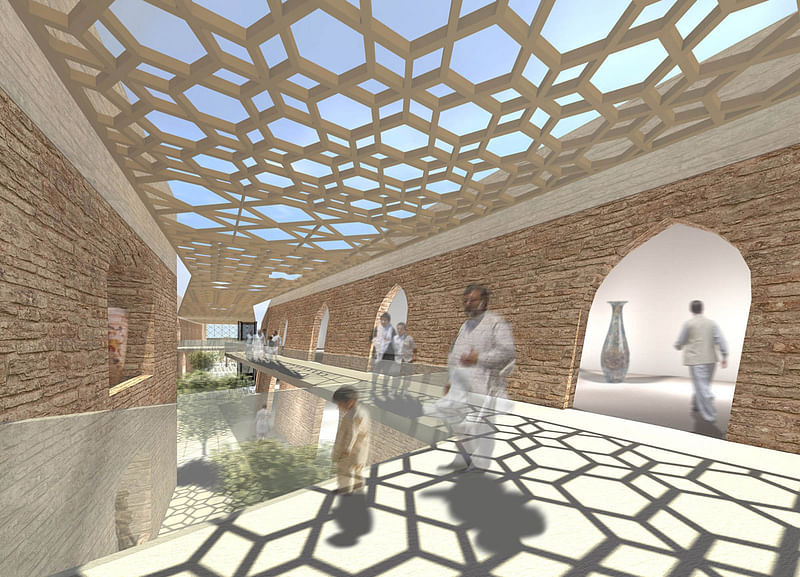
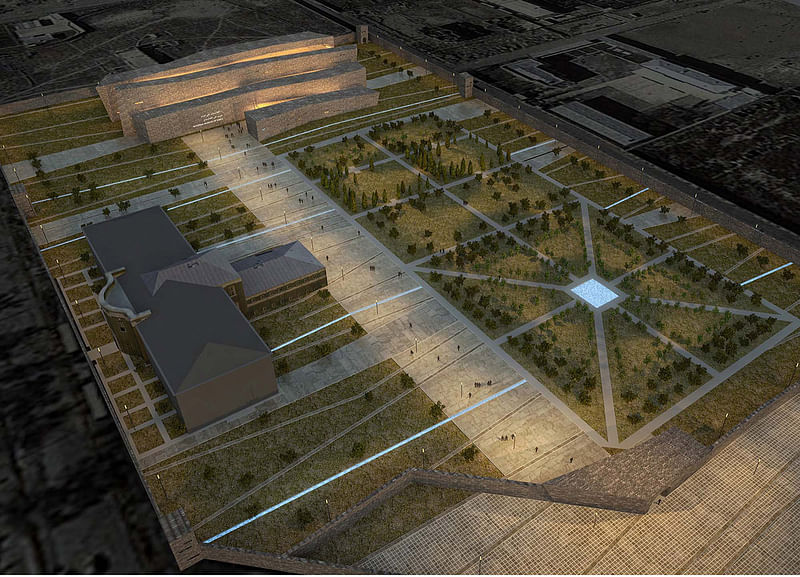
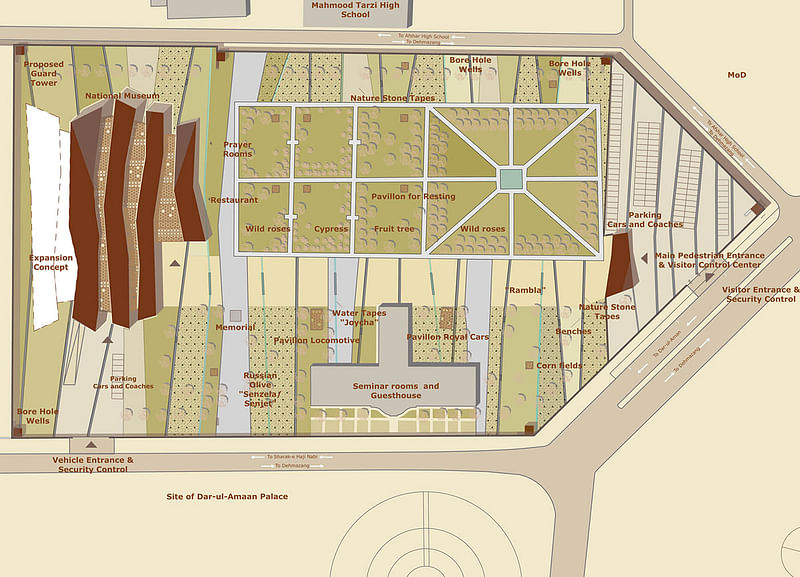

The jury was composed of Dr. Sayed Makhdoom Raheen (Chair, Minister of Information and Culture); Toby Allen (MEng (Hons) Engineering Sciences, CEng, MICE); Susanne Annen (Dipl.-Ing. Architecture); Klaus Bode (Hon FRIBA , BSc (Hons) Building Environmental Services Engineering); Dinah Casson (1st class degree Ravensbourne College of Art & Design); Dr Vartan Gregorian (President Carnegie Corporation, New York); Dr Navina Haidar (MA Art and Archaeology BA Honors English Literature); Professor Bashir A. Kazimee (BArch, MArch Advanced Studies); Jolyon Leslie (BArch, MA Diploma Architecture); and William C.S. Remsen (MArch, MA Landscape Architecture, B.A. Anthropology and Architecture).

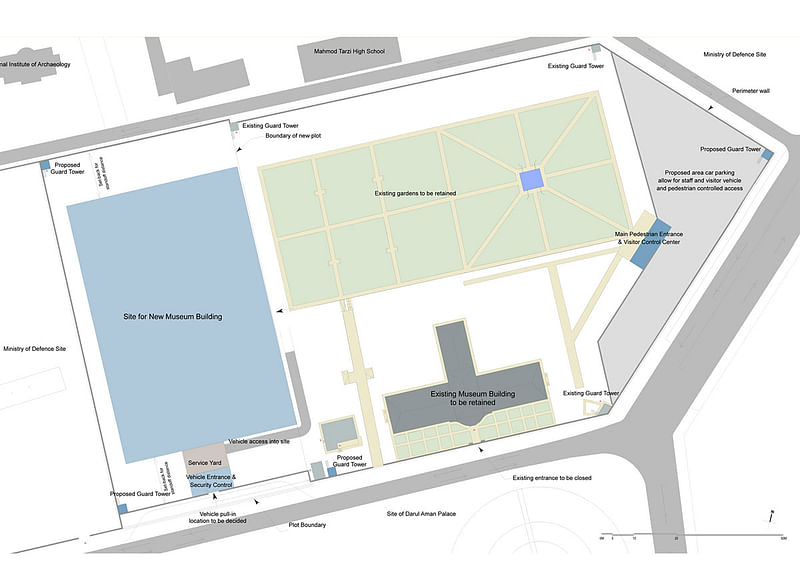
Three honorable mentions of equal ranking were also awarded to IAN+ architecture & engineering, Italy; Lawrence and Long Architects, Ireland; and Luisa Ferro, Architect, Italy. Check the image gallery below to see the honorable mentions entries.
All images courtesy of International Architectural Ideas Competition for the National Museum of Afghanistan (IAIC_NMA).
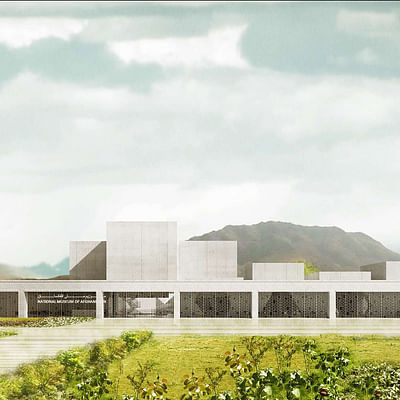
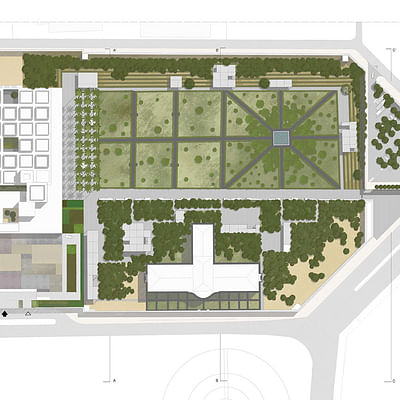



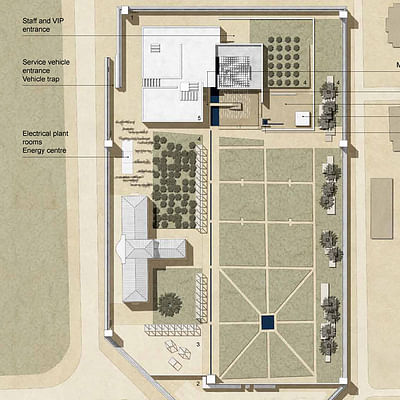

Share
0 Comments
Comment as :